Material Science and Engineering
Glassy spin clusters shatter expectations
Nanoscale thin films containing unconventional, glass-like magnetic states can lead to the development of novel charge-spin coupled devices.
KAUST researchers have discovered that thin films made from manganites, a highly magnetic form of manganese oxide, can be switched instantly and reversibly between conductive and insulating states using an electric field1. This new form of control could produce next-generation, more efficient transistors that boost density and speeds by tapping into both the spin and charge properties of electrons.
Unlike conventional charge-based semiconductors, materials with competing electronic and magnetic properties often show exotic ‘phase separation’ activity. For example, when manganites are cooled to frigid temperatures in a magnetic field, their electron spins can move out of alignment and ‘freeze’ into a disordered arrangement known as a ‘spin glass’. Because electrical transport through spin glasses diminishes with increasing disorder, researchers are looking for easy ways to modulate these dynamic, fluid-like glassy states.
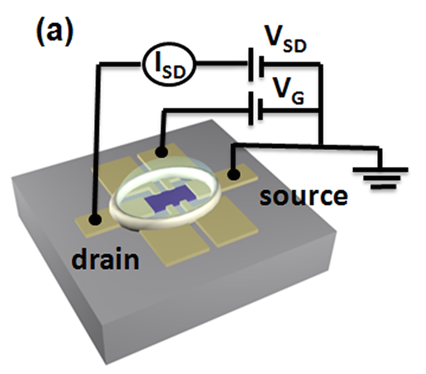
Schematic experimental setup of the electric double layer transistor device with the PCSMO film as the channel.
© Lourembam et al./Applied Physics Letters
Tom Wu, associate professor in the Physical Science and Engineering Division at KAUST, and colleagues from Nanyang Technological University in Singapore investigated whether electrostatic gating of ultrathin manganite films was a viable answer.
First, the team grew 40-nanometer thin layers of a praseodymium–calcium–strontium–manganese-oxide (PCSMO) compound on an atomically flat substrate. Then, they patterned the film into an electric double layer transistor: a narrow PCSMO channel overlain by a ‘gate’ electrode — a tiny, salty ionic liquid droplet — that can control current flow through the channel with electric fields.
Analysis of the PCSMO films showed they took on ‘cluster glass’ attributes: a system where nanoscale regions of spin order appear inside the magnetically inhomogeneous compound.
“Glassy spin clusters in manganite films are challenging to tackle because their structures depend sensitively on the thermal and magnetic field ‘history’ they go through,” says Wu. “We had to carefully design experiments to reveal their characteristics.”
When the team modified the current flowing through the PCSMO channel using the gate electrode, they spotted a significant, low-temperature field effect — a 200 percent increase in channel resistance suitable for transistor switching. This effect, which did not appear in homogenous manganite channels, appears to arise from strongly coupled charges and spins in the cluster glass. Under certain gate voltages, the electric field may ‘seed’ the growth of more conductive, ordered spin phases that deactivate the highly resistive glassy states.
“Our work opens a new venue not only for understanding the behaviors of ‘mysterious’ spin clusters in magnetic thin films, but also for constructing novel oxide electronic devices with inhomogeneous materials that couple charges and spins,” says Wu.
References
- Lourembam, J., Ding, J., Bera, A., Lin, W. & Wu, T. Asymmetric electroresistance of cluster glass state in manganites. Applied Physics Letters 104, 133508 (2014). | article
You might also like
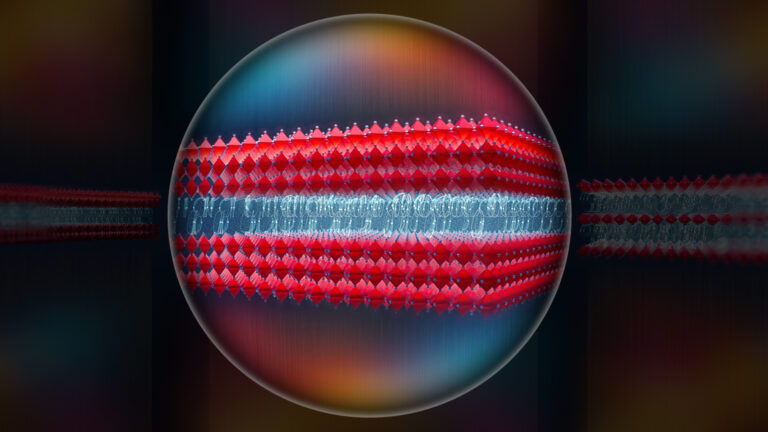
Material Science and Engineering
Electron movie guides design of layered perovskite materials
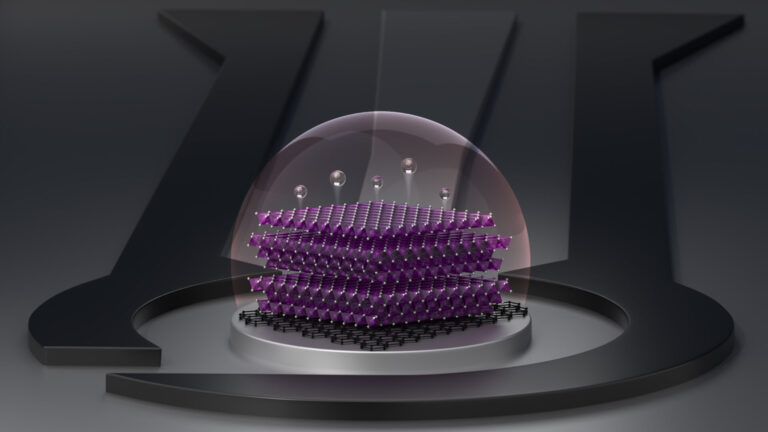
Material Science and Engineering
Remote region sensor for essential vitamin deficiency
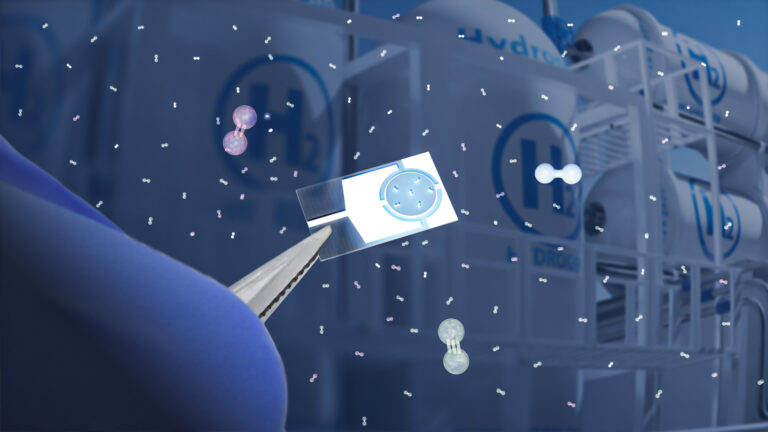
Material Science and Engineering
Low-power hydrogen sensor detects leaks in an instant

Material Science and Engineering
Illuminating pathways to long-lived organic solar cells

Chemistry
Beating the dark current for safer X-ray imaging

Chemical Engineering
Net benefits for advanced materials design
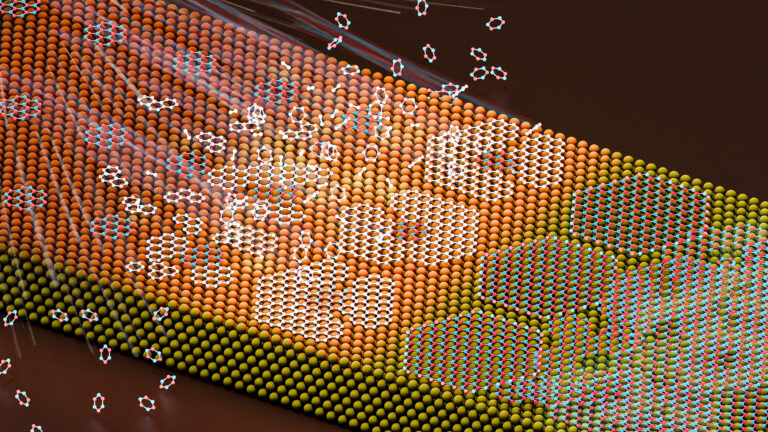
Material Science and Engineering
Atom-thin insulator grown into perfect films
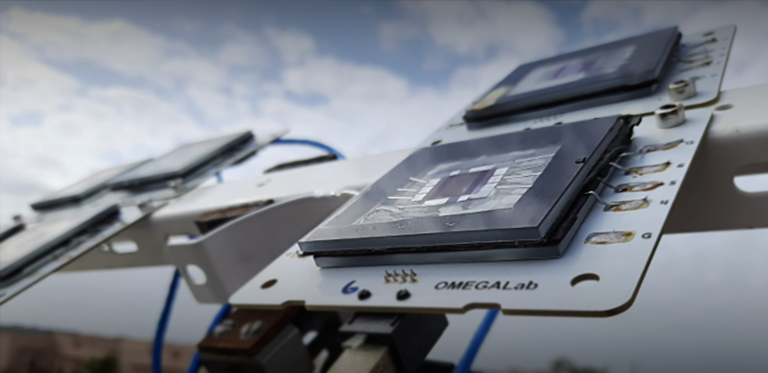
Material Science and Engineering



